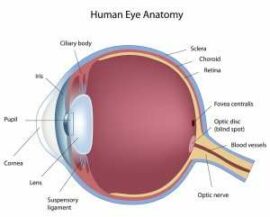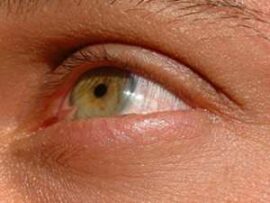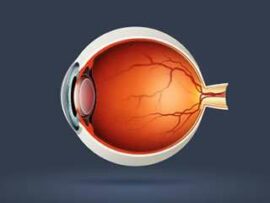Posted by:
Eyes on Rosemont
in Age-Related, Common Eye Conditions
One of the most important reasons for regular examinations by your eye care provider is evaluate for the development of macular degeneration. According to the Bright Focus™ Foundation, this condition is the primary cause of loss of vision and blindness in older individuals ages 60 and above and is known under these circumstances as age-related […]
Read
More
Posted by:
Eyes on Rosemont
in All About Eyes, How the Eyes Work
The eye has many parts that work together to create vision. The eyes themselves are only part of “seeing.” The brain is also involved. The eyes, though, begin the complex process of vision by gathering, focusing and passing on visual information to the brain. To help you learn how the eye works, here is a […]
Read
More
Posted by:
Eyes on Rosemont
in All About Eyes, How the Eyes Work
The primary sufferers of technology-related eyestrain used to be adults whose work involved computers. Now, however, people of all ages use computers, smartphones, tablets and gaming devices, which can take their toll on the eyes. As people’s reliance on technology grows, so does the incidence of eyestrain. Keep reading to learn more about digital eyestrain […]
Read
More
Posted by:
Eyes on Rosemont
in Changes in Appearance, Common Eye Conditions
Characterized by a yellowish raised part of the scleral conjunctiva (the lining of the white part of the eye), a pinguecula usually develops near the cornea (colored part of the eye), but does not extend past it. Similar to a callus on the skin, changes in tissues lead to the buildup of calcium, fat, and/or […]
Read
More
Posted by:
Eyes on Rosemont
in Changes in Appearance, Common Eye Conditions
Similar to a bruise under the skin, a subconjunctival hemorrhage happens when a small blood vessel located between the sclera (white portion of an eye) and the conjunctiva (lining on the surface of an eye) breaks and covers the sclera with blood. Unlike broken blood vessels located under the skin which take on shades of […]
Read
More
Posted by:
Eyes on Rosemont
in A Child's Vision
Approximately 11% of school-aged children have been diagnosed with attention deficit/hyperactivity disorder (ADHD), according to recent studies. The central symptoms of ADHD — difficulty sustaining attention, poor control of behavior, hyperactivity — make it difficult for children to succeed in school. Additionally, parents of kids with ADHD may become frustrated with their behavioral outbursts and […]
Read
More
Posted by:
Eyes on Rosemont
in All About Eyes, Protecting Your Eyes
Protecting your eyesight is an important part of staying healthy overall. Maintaining sound eye health will also help you preserve your quality of life as you age. To keep your eyes as healthy as possible, follow these simple lifestyle practices. Get regular eye exams. Some eye problems — including age-related macular degeneration, diabetic eye disease […]
Read
More
Posted by:
Eyes on Rosemont
in Basic Visual Skills, How the Eyes Work
Each eye picks up a slightly different image, but through a process called fusion, the brain blends the images together to make one three-dimensional picture. Good eye coordination is needed, however, and allows the eyes to sustain proper alignment so that they can focus on practically the same image, though it is seen somewhat differently. […]
Read
More
Posted by:
Eyes on Rosemont
in Basic Visual Skills, How the Eyes Work
The eyes have a focusing system called accommodation; it allows for visual clarity. The system is rested when you look at an object that is far away and is not forced to strain like it would if the target were close. In normal circumstances, the eyes are able to effortlessly transition between objects that are […]
Read
More
Posted by:
Eyes on Rosemont
in All About Eyes
Every morning, we open our eyes and become immersed in a wealth of visual information. The eyes and related brain structures are a complex system that allows us to experience visual information from the surrounding world. It is easy to take clear vision for granted, but even subtle changes in the structure or functioning of […]
Read
More










